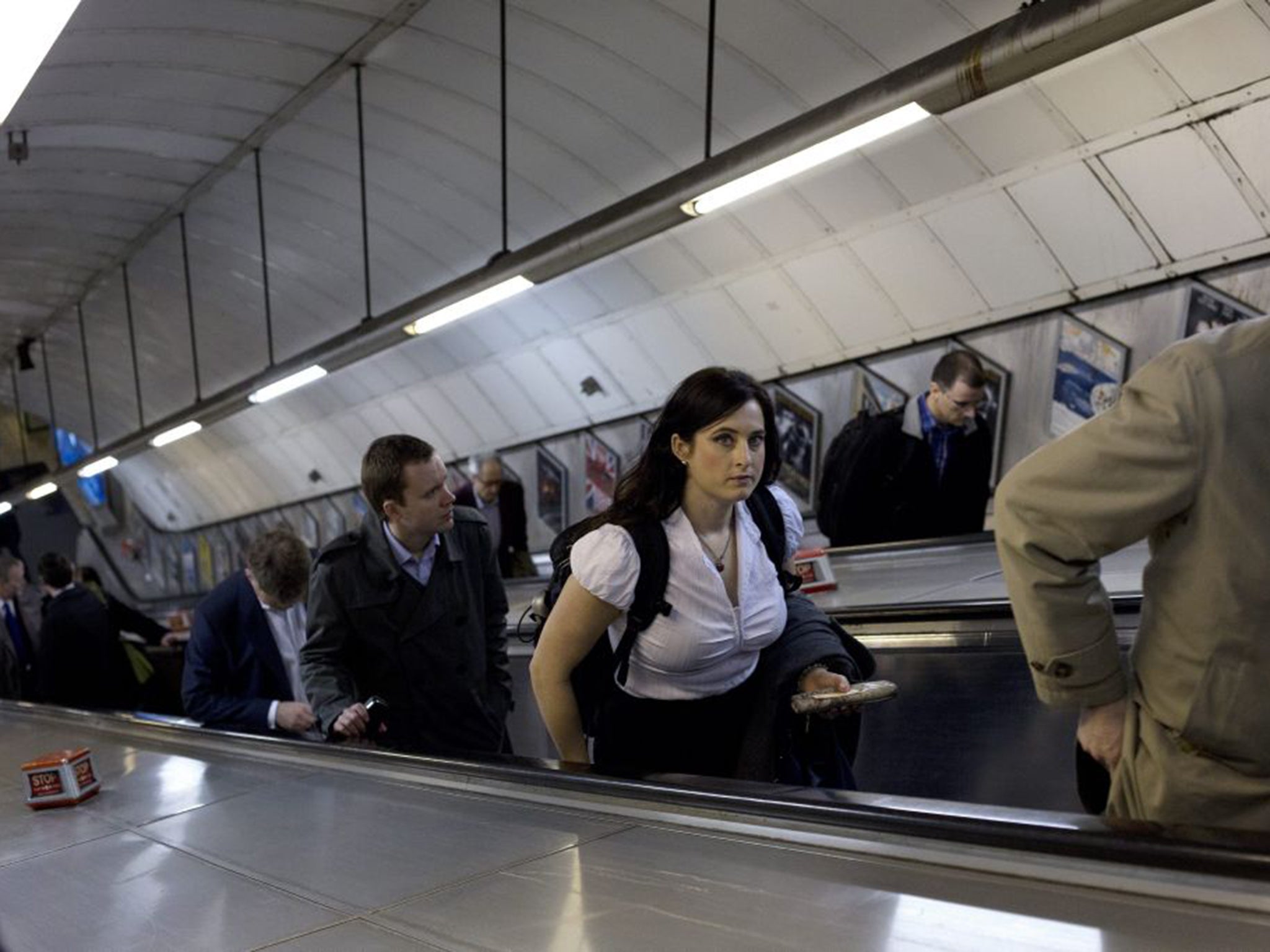Standing-only escalators: Scientifically, those who zip down ‘fast lanes’ slow everyone else down
London commuters may be shocked after being told they should no longer 'stand on the right, walk on the left'. But, says Adam Lusher, there's method in this madness

Your support helps us to tell the story
From reproductive rights to climate change to Big Tech, The Independent is on the ground when the story is developing. Whether it's investigating the financials of Elon Musk's pro-Trump PAC or producing our latest documentary, 'The A Word', which shines a light on the American women fighting for reproductive rights, we know how important it is to parse out the facts from the messaging.
At such a critical moment in US history, we need reporters on the ground. Your donation allows us to keep sending journalists to speak to both sides of the story.
The Independent is trusted by Americans across the entire political spectrum. And unlike many other quality news outlets, we choose not to lock Americans out of our reporting and analysis with paywalls. We believe quality journalism should be available to everyone, paid for by those who can afford it.
Your support makes all the difference.On 23 November 2015, a Monday morning seemingly much like any other, commuters arrived at central London's Holborn underground station to be confronted by a world plunged into chaos.
Here was a world where all certainty had vanished, a world that had abandoned the convention – hallowed since the first Tube station escalator was installed at Earl's Court in 1911 – that passengers stood on the right of the escalator and walked up the left.
Megaphone-wielding staff told everyone to stand, not walk – regardless of which side of the escalator they were on – and talked about new methods to "keep people moving through the station".
What fresh hell, wondered a panicked metropolis, was this?
That infuriating tourist clogging up the left escalator lane with suitcase and vacant stare – had the gormless idiot of countless muttered commuter curses been the visionary of crowd management all along, helping rather than hindering Londoners on their journeys?
Had everything been overturned by a new Grand Unified Theory of crowd and traffic management – that the slow shall be fast and the quick shall refrain from running or walking up the escalator?
By Wednesday, there was open revolt, with social media reporting that commuters were rebelling and ignoring the no walking up the escalators edict.
Yesterday, a shaken Independent turned to Transport for London. The press office steadfastly maintained that this was not The End of Days. It was, rather, a three-week experiment, limited to Holborn during only the 8.30am to 9.20am morning rush, with no intention of revolutionising escalator etiquette anywhere else.
And there was no Grand Unified Theory, just a cunning plan hatched by staff who had noticed that relatively few people dared take on the challenge of walking up Holborn's 23.4m-long "mega-escalator". Meaning that in the rush hour there was often an awful queue of people waiting to get on the escalator's right-hand, standing side.
So, those clever staff wondered, why not dispense with the left-hand, walking lane, doubling the space for people standing on the escalator and thereby – perhaps – speeding the upward passage of the crowd as a whole? (Even if it meant that the hurried and athletic were slowed to a more frustrating pace.)
Some experts, The Independent discovered, thought it might just work.
"It could well speed things up in the long run," says Paul Townsend, of the Crowd Dynamics consultancy. "It doesn't necessarily get the individual through quicker, but it might get the crowd as a whole to their destinations faster – just as, if you pushed a lot of people into a corridor very quickly, they would probably go a lot slower than if you regulated them and sent them in short, small bursts down the corridor."
Transport for London's idea, he says, seems to be that instead of having one or two individuals moving quickly up the escalator's left lane and a big queue waiting to use the right lane, you slow down those at the fast extremes, but improve the overall average speed of the crowd. It is, says Townsend, "kind of counterintuitive." But with some traffic and crowd control measures, he says, counterintuitive works.
"Take speed restrictions on motorways. Cars moving slower can often mean more vehicles getting down the road [in a given time]. If everyone is going at 100 mph, the cars have to space out [to a safe braking distance] so despite the speeds, you don't get more cars along that stretch of motorway."
Yesterday, social media still questioned the "standing madness at Holborn".
But at Transport for London HQ, confidence was growing that its maverick methods would get results.
The huge fuss caused by the escalator edict, it was claimed, had alerted travellers to the experiment and made them responsive to it.
The trial would continue, at least until the three weeks were up.
Commuters at Holborn, stand strong on those escalators (but do NOT walk up them). It will be all over by Christmas. Possibly.
Join our commenting forum
Join thought-provoking conversations, follow other Independent readers and see their replies
Comments